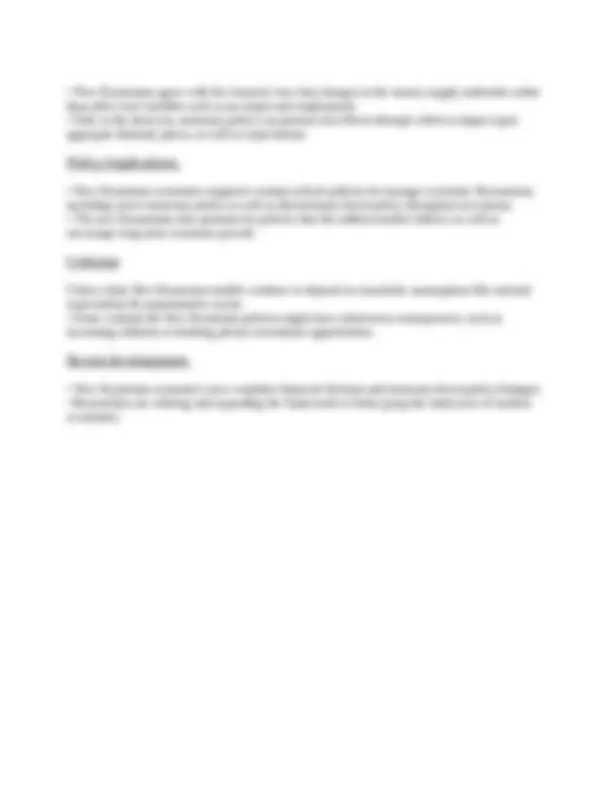



Study with the several resources on Docsity

Earn points by helping other students or get them with a premium plan


Prepare for your exams
Study with the several resources on Docsity

Earn points to download
Earn points by helping other students or get them with a premium plan
Community
Ask the community for help and clear up your study doubts
Discover the best universities in your country according to Docsity users
Free resources
Download our free guides on studying techniques, anxiety management strategies, and thesis advice from Docsity tutors
NEW KEYNESIAN ECONOMICS. BASIC NKE CONCEPTS . EASY TO UNDERSTAND
Typology: Summaries
1 / 2

This page cannot be seen from the preview
Don't miss anything!


Introduction The macroeconomic framework known as "new Keynesian economics" developed and the neoclassical synthesis and combined aspects of microeconomic principles with Keynesian economics. It first appeared in the 1980s in reaction to conventional economics' inability to adequately explain the economy's cyclical swings.
Critics claim New Keynesian models continue to depend on unrealistic assumptions like rational expectations & representative actors.